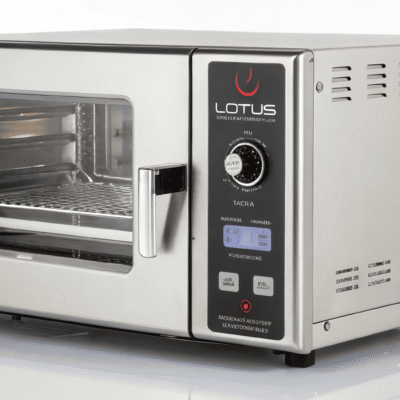In an increasingly interconnected and digitally managed world, the security of physical infrastructure has become as critical as cybersecurity. The industrial access control market—spanning sectors such as manufacturing, energy, aerospace, pharmaceuticals, and utilities—has seen significant transformation over the last decade. The need for robust and scalable access management solutions to protect valuable assets, personnel, and intellectual property has elevated access control systems from optional to essential.
This blog delves into the
industrial access control market forecasts from 2021 to 2031, exploring global and regional market share, prevailing trends, component-wise segmentation, and growth opportunities across diverse industrial verticals.
Market Overview
Industrial access control systems manage the physical entry and exit of personnel in industrial facilities using technology-enabled hardware and software. These systems are critical for protecting high-value operations and adhering to safety and compliance regulations in high-risk environments.
Over the forecast period, the industrial access control market is poised to grow significantly, driven by rising concerns over physical security, the adoption of smart technologies, and regulatory mandates across industries.
Key Market Drivers
1. Rise in Security Threats
The industrial sector is facing increasing threats such as theft, sabotage, espionage, and safety incidents. This has prompted companies to deploy comprehensive access control systems that ensure only authorized personnel can access specific areas.
2. Technological Advancements
The integration of AI, IoT, and biometric technologies is pushing the boundaries of traditional access control. Modern systems now offer advanced analytics, real-time monitoring, and multi-layered authentication.
3. Regulatory Compliance
Strict compliance requirements, especially in sectors like pharmaceuticals, aerospace, and chemicals, demand rigorous control over physical access. Access control systems aid in audit trails, visitor management, and reporting.
4. Shift Toward Smart Manufacturing
Industries moving toward Industry 4.0 are investing in smart security infrastructure, including integrated access control systems that can be centrally monitored and managed.
Component-Based Market Segmentation
The industrial access control market is segmented based on three primary components:
hardware,
software, and
services.
1. Hardware
Hardware constitutes a major portion of the market, given the necessity of physical devices to regulate access.
- Card-Based Readers: Widely used for their ease of implementation and cost-effectiveness, card readers continue to serve as a fundamental layer of access control.
- Biometric Readers: These systems, which include fingerprint, facial, and iris recognition, are gaining traction for their higher accuracy and security.
- Multi-Technology Readers: These combine card and biometric technologies, offering flexible authentication mechanisms.
- Electronic Locks: These play a vital role in securing access points and are being increasingly used in facilities with high security needs.
- Others: This includes turnstiles, keypads, controllers, and communication modules.
2. Software
Access control software solutions are evolving to provide real-time tracking, remote access management, and integration with other security systems. Cloud-based platforms are becoming more prominent, enabling scalable and centralized access management.
3. Services
Services, including installation, maintenance, training, and system integration, are essential for the successful deployment and operation of access control systems. With growing system complexity, demand for managed and professional services is on the rise.
Application-Based Market Segmentation
The industrial access control market serves a wide range of industries, each with unique security needs:
1. Automotive
Manufacturing plants and R&D centers in the automotive industry rely on secure access to protect trade secrets, prototypes, and worker safety. Automated assembly lines also require access control to mitigate risks from unauthorized personnel.
2. Aerospace
Given the high-value equipment and sensitive data involved, aerospace facilities require top-tier access control systems. Biometric verification and multi-factor authentication are increasingly common.
3. Utilities
Power plants, water treatment facilities, and other utility providers require secure access to prevent disruptions and safeguard national infrastructure. Compliance with NERC and similar regulations further drives the adoption of robust access control systems.
4. Chemicals & Synthetics
Due to the hazardous nature of chemicals and potential environmental and health risks, these facilities use access control systems to limit exposure and track personnel movements.
5. Electronics & Machinery
In a highly competitive landscape, protecting intellectual property and maintaining operational safety are top priorities. Integrated access control and surveillance systems are often deployed here.
6. Pulp & Paper
While often overlooked, this sector requires security for expensive machinery and operational areas to ensure safety and reduce downtime due to human error or intrusion.
7. Steel & Metal
Given the large-scale nature of operations and heavy equipment involved, controlling physical access is essential to prevent accidents and ensure compliance with safety regulations.
8. Pharmaceuticals
This industry is tightly regulated, and access control is vital for maintaining chain-of-custody, ensuring cleanroom integrity, and protecting sensitive formulations.
9. Others
Other sectors include food and beverage, textiles, mining, and construction—each with unique access control needs and compliance requirements.
Regional Market Insights
The growth of the industrial access control market varies significantly across regions:
North America
With its mature industrial base and advanced security infrastructure, North America leads in the adoption of access control systems. Regulatory standards and technological adoption fuel market growth.
Europe
European countries, especially Germany, the UK, and France, are embracing Industry 4.0 and placing a strong emphasis on security compliance, thus driving market expansion.
Asia-Pacific
The fastest-growing region, Asia-Pacific is experiencing rapid industrialization in countries like China, India, and South Korea. Smart factory initiatives and increased investment in infrastructure security are boosting demand.
Latin America
Countries in Latin America are gradually adopting access control technologies, driven by growing concerns over crime and security in industrial zones.
Middle East and Africa
This region is showing strong potential due to increased investment in oil & gas, mining, and infrastructure, all of which require enhanced security systems.
Key Market Trends
- Biometric Boom: The shift from traditional systems to biometric-based authentication is one of the most significant trends. Touchless biometrics, especially facial recognition, are seeing rapid growth post-COVID.
- Cloud-Based Access Control: Enterprises are shifting to cloud-based platforms that offer scalability, remote access, and analytics-driven insights.
- Integration with IoT and AI: AI-powered systems can identify unusual access patterns, while IoT devices enable better connectivity and monitoring.
- Mobile Access Solutions: Mobile credentials are gaining popularity, reducing the reliance on physical cards and badges.
- Cyber-Physical Convergence: With rising threats, many companies are integrating physical and cyber security strategies into a unified approach.
Growth Opportunities
- SME Adoption: As access control systems become more affordable and scalable, small and medium enterprises (SMEs) are expected to increase adoption.
- Greenfield Projects in Developing Regions: New industrial facilities being developed in Asia-Pacific, Africa, and Latin America offer lucrative growth opportunities.
- Customized Industry Solutions: Tailored access control systems for specific sectors such as healthcare or chemicals can unlock niche market segments.
- Partnerships and M&A: Collaboration between technology providers, security integrators, and end-users will accelerate innovation and market penetration.
Conclusion
The industrial access control market is entering a dynamic growth phase. With security taking center stage in modern industrial operations, the adoption of advanced access control technologies is not just a trend but a necessity. As we move toward 2031, the integration of biometrics, AI, and cloud solutions will reshape how industries secure their facilities, assets, and workforce.
Enterprises that proactively invest in scalable, intelligent, and compliant access control systems will not only enhance their security posture but also improve operational efficiency and regulatory readiness in a competitive global landscape




